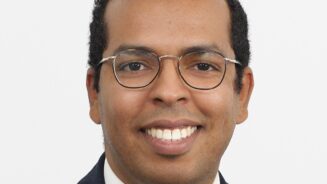Trigo-Paz, who is now head of EMD at BlackRock, and his team of six were poached from BNP Paribas in the summer of last year.
The firm has now extended its Luxembourg-domiciled BlackRock Global Fund range to include an EM corporate bond fund and EM investment grade corporate bond fund.
Both of the funds are managed by Trigo-Paz, with co-managers Chris Kelly, Jane Yu and Raphael Marechal also playing a role.
The BGF EM Corporate Bond Fund will have at least 70% of total assets invested in US-dollar denominated corporates and high yield corporates.
Meanwhile, the BGF EM Investment Grade Bond Fund will invest across local debt, currencies, hard currency sovereign debt and corporate debt, with 70% of the fund in investment grade securities with a minimum rating of BBB-/Baa3.
Dual aim
Trigo-Paz said the fund will look to exceed its benchmark by 175bps but added that he did not like to give absolute values as they lead managers to make “absolute mistakes”. He said it was important to look at the context of the market and while the target was in place, a dual aim of the team is to be top quartile. The three-year performance of Trigo-Paz versus his benchmark is shown in the graph below.
His speciality is Latin America debt, as the team split it down countries/regions, but ultimate responsibility lies with the individual managers for the decisions they take.
Manager accountability
“The managers have to do their work on their own. I am there to update, give them news flow and suggest things but they are still accountable for whatever they put in their funds.”
On top of the new funds BlackRock has changed the investment policies of the BGF Emerging Market Bond Fund and BGF Local Emerging Market Short Duration Bond Fund, which were launched by the firm before Trigo-Paz and his team joined.
Trigo-Paz said the changes were made in line with the style of funds he and his team had run before at BNP Paribas and also because he did not want to be restricted in making a duration call.
For Trigo-Paz the much-lauded ‘Great Rotation’ has been happening since the start of the year, however he views it as a rotation into long duration from short duration fixed income “once again”.
“The end of the first quarter is an inflection point for the year and it has happened for the past three to four years. The economy has surprised the world to the negative and we are disappointed, even the US has started to disappoint. We are back to lower for longer and from short duration to long duration again,” he explained.
Double-digit returns no longer
In such an environment, the fact investors in EMD can gain 200bps to 300bps on top of the yields from US treasuries means they will continue to allocate to it.
While some of the main benchmarks have a 5% allocation to the asset class most institutional investors only have 1%, which means a further 1% allocation, in the US alone, would see a further $150bn of inflows.
But Trigo-Paz is candid in telling potential investors the double-digit returns of years past are no longer up for grabs.
“People were passively taking an active view to underweight the asset class because they did not have the people or expertise in the area of EMD. Now they are deciding to make that switch because that 5% or 4% underweight to the index was starting to be very painful. Now they need to move from 1% to 2% to 3% to 4% to 5% and get to benchmark before then deciding whether to be overweight or underweight. But that home bias is difficult to break,” he concluded.



